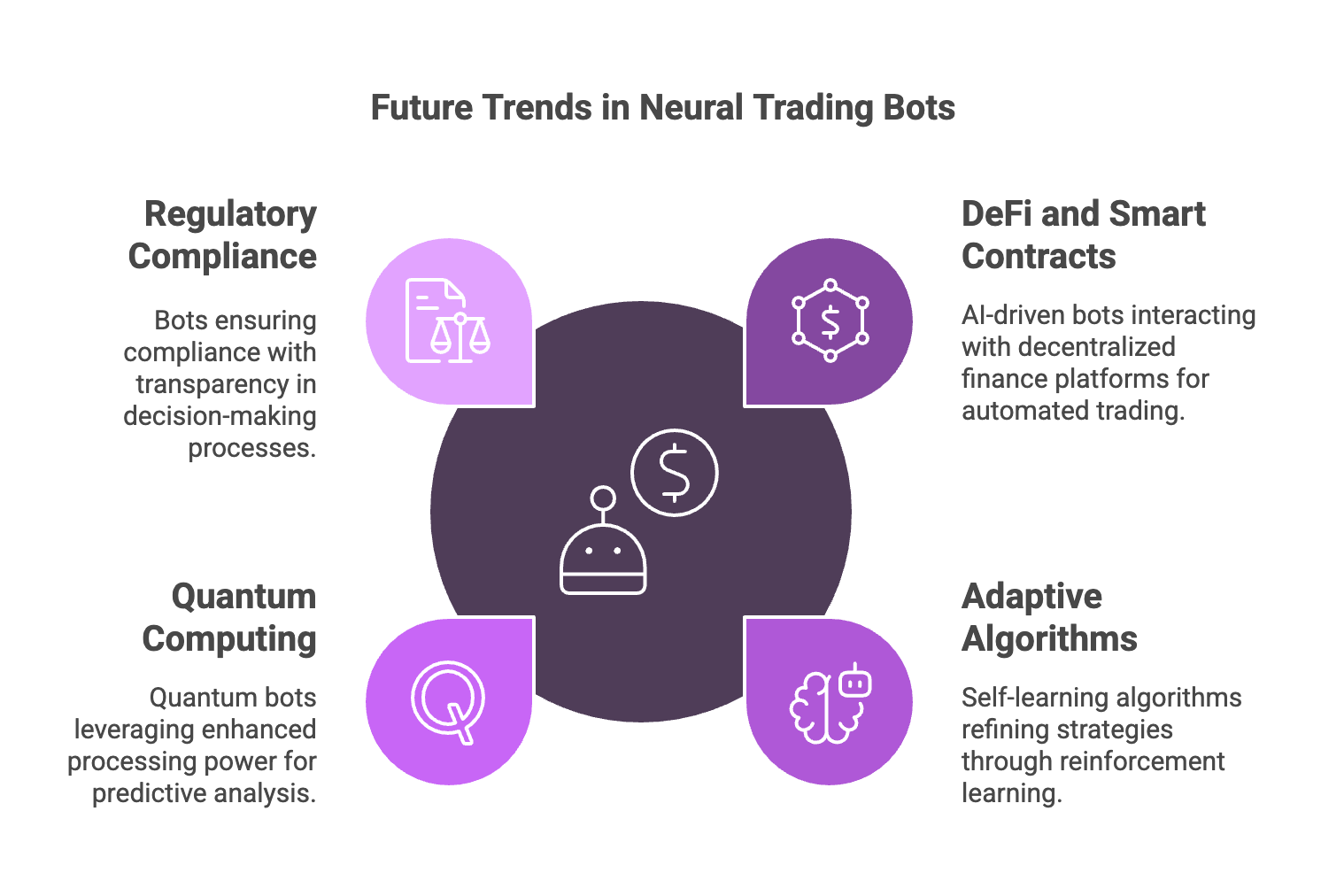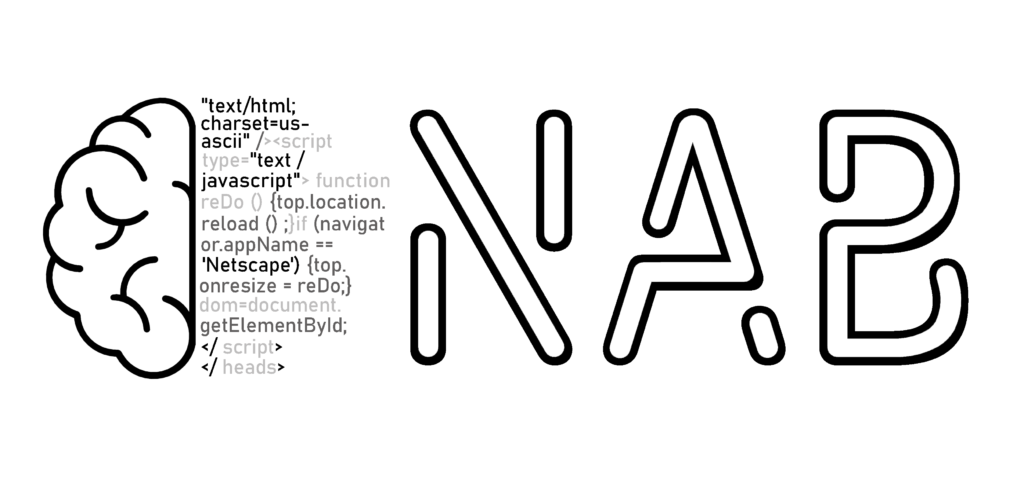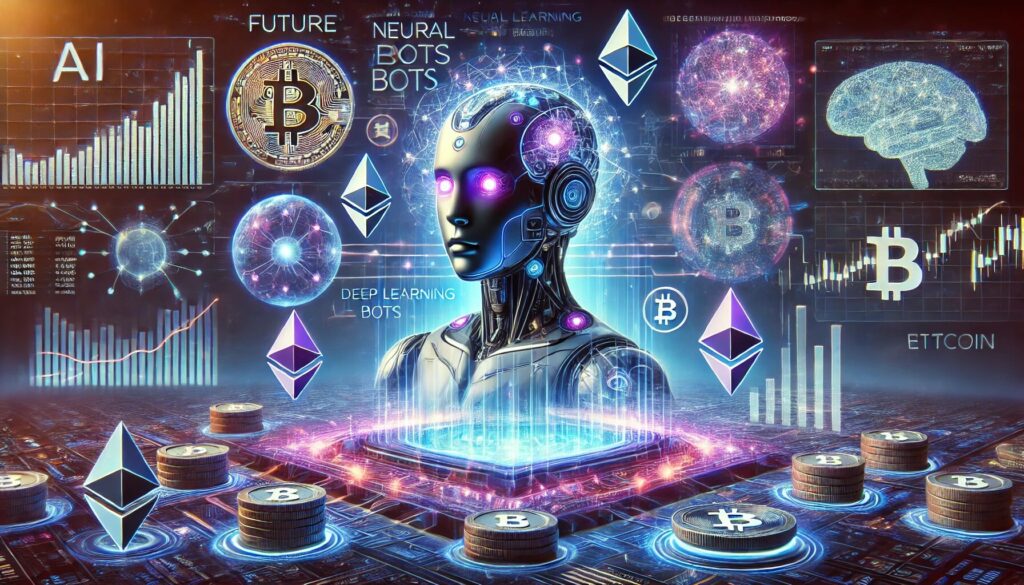The integration of artificial intelligence (AI) and neural networks into cryptocurrency trading has revolutionized the financial landscape. Neural trading bots offer unprecedented speed, efficiency, and adaptability, enabling traders to capitalize on market movements with minimal human intervention. As the crypto market evolves, so too does the role of neural bots. In this article, we explore the future of neural bots in cryptocurrency trading, emerging trends, and potential challenges.
1. Evolution of Neural Bots in Crypto Trading
1.1 Early Adoption and Current Trends
- Initial trading bots relied on rule-based strategies with limited adaptability.
- Machine learning and neural networks have enabled bots to identify patterns and adapt to market conditions.
- Increasing institutional adoption of AI-driven trading strategies.
Case Study: NeuralArB (NAB) – How neural arbitrage is shaping the future of crypto trading.
1.2 Key Advancements
- Deep Learning Integration: Bots are improving their predictive accuracy by analyzing massive datasets.
- Sentiment Analysis: AI models are now incorporating social media and news sentiment to inform trading decisions.
- High-Frequency Trading (HFT): Enhanced algorithms execute trades in milliseconds, leveraging micro-market inefficiencies.
2. Future Trends in Neural Trading Bots
2.1 Decentralized Finance (DeFi) and Smart Contracts
- AI-driven bots will interact directly with DeFi platforms for automated lending, staking, and arbitrage.
- Smart contracts will enable trustless execution of AI-generated trading strategies.
Example: Aave and Compound Bots – How AI is optimizing DeFi trading.
2.2 Adaptive and Self-Learning Algorithms
- Future bots will continuously refine strategies through reinforcement learning, improving decision-making over time.
- Enhanced adaptability will allow bots to react to black swan events with minimal losses.
2.3 Quantum Computing and Crypto Trading
- Quantum computing may provide a massive leap in processing power for predictive analysis.
- AI-driven quantum bots could outpace traditional algorithms, offering new competitive advantages.
2.4 Regulatory Compliance and Transparency
- As governments introduce regulations on AI-driven trading, compliance will become a priority.
- Neural bots may be required to provide transparent decision-making processes to avoid market manipulation concerns.
Regulation Example: The SEC’s stance on AI-driven trading in the United States.

3. Challenges and Risks
3.1 Security Concerns
- AI-driven trading bots could become targets for cyberattacks.
- Secure deployment and robust authentication will be critical for protecting assets.
- Best Practice: Cold Storage and API Security – How to safeguard crypto assets.
3.2 Ethical Considerations
- The increasing autonomy of trading bots raises ethical questions about AI’s role in financial markets.
- Addressing AI biases and ensuring fair trading practices will be necessary for widespread adoption.
3.3 Market Saturation
- As more traders deploy neural bots, market inefficiencies may diminish, reducing arbitrage opportunities.
- Increased competition may lead to diminishing returns for smaller traders.
- Solution: Leveraging proprietary AI models for a competitive edge.
Comparison Table: Top AI Trading Bots
|
Trading Bot |
Features |
Supported Exchanges |
AI Capabilities |
Fees |
|
Binance AI |
High-speed execution, ML-based trading |
Binance |
Predictive analytics, risk assessment |
Variable |
|
NeuralArB (NAB) |
Cloud-based, High-speed execution, reliable |
Binance ,Kraken, Huobi, Coinbase, more than 200 |
Automated, no-risk, neural arbitrage |
0.5% per 16 days cycle |
|
Cloud-based, strategy marketplace |
Binance, Coinbase, Kraken |
Algorithmic trading, backtesting |
$19-$99/month |
|
|
Smart trading terminal, copy trading |
Binance, Bitfinex, Kraken |
AI-driven trade optimization |
$29-$99/month |
|
|
16 free built-in bots, low fees |
Binance, Huobi |
Grid trading, arbitrage AI |
0.05% per trade |
|
|
Portfolio rebalancing, API integration |
Binance, Coinbase |
Automated portfolio management |
$19/month |
Conclusion
The future of neural bots in cryptocurrency trading is promising, driven by advancements in AI, machine learning, and blockchain technology. While challenges such as security risks, ethical concerns, and market saturation persist, the potential for more efficient, adaptive, and autonomous trading remains immense. Traders who embrace AI-driven innovation while staying ahead of regulatory developments will likely reap the greatest benefits in this rapidly evolving market.
As neural bots become more sophisticated, they will shape the future of cryptocurrency trading, making markets more efficient and accessible to traders of all levels.
🚀 Are you using neural bots for trading? Connect with us for the latest insights in AI-driven crypto trading. 🔥
🔗 Related: Crypto Arbitrage Tax Guide: How to Stay Compliant & Save


